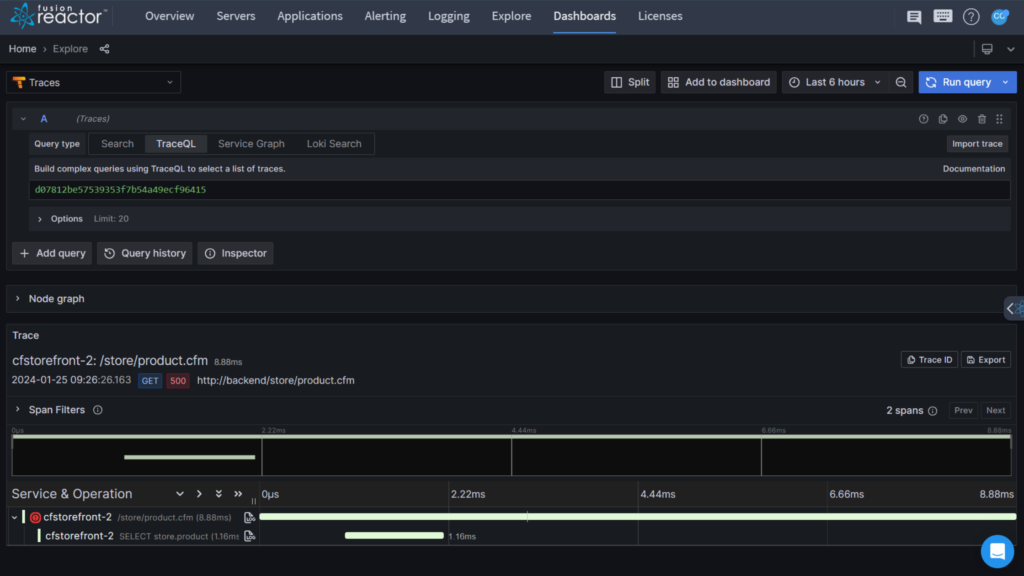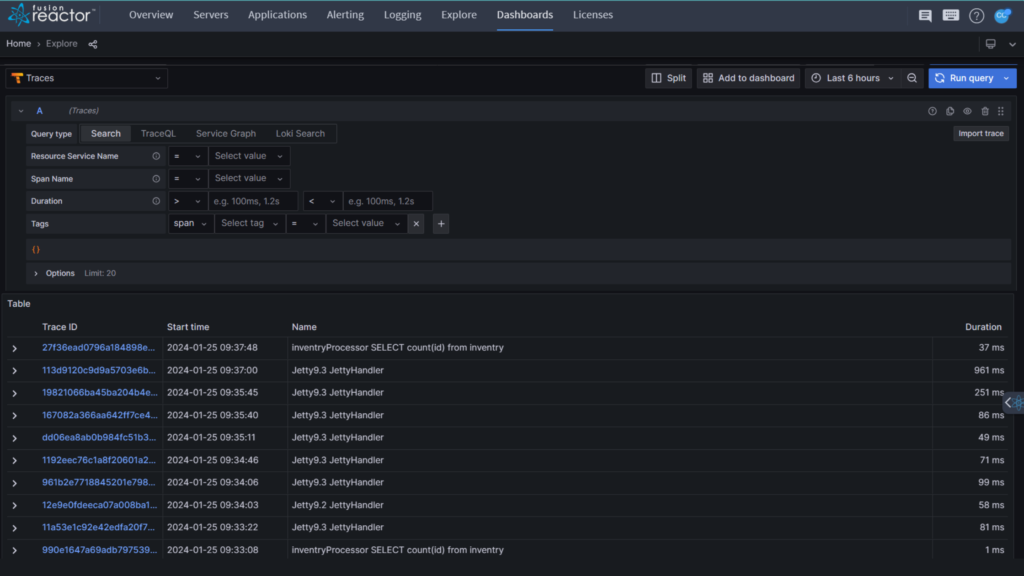
Comprehensive insight vs maintaining system efficiency
In the complex application performance monitoring landscape, the value of trace data must be balanced. At FusionReactor, we recognize this data’s critical role in system diagnostics and performance tuning. That’s why we’ve set our default trace sample rate at a strategic 5%. This rate strikes a balance between providing comprehensive insight and maintaining system efficiency. Moreover, FusionReactor offers the flexibility to adjust this rate, even down to as low as 1%, to suit a range of user needs and scenarios. This article will explore the benefits of FusionReactor’s 5% trace sample rate.
Understanding trace sample rates
Trace sample rate is the proportion of transactions or requests captured and analyzed by an observability tool. While capturing more data might seem advantageous, it’s not always the most practical or beneficial approach. This is where the significance of our 5% trace sample rate becomes apparent, with the option to go down to 1%.
The benefits of a 5% trace sample rate
Balanced insight:
At 5%, we hit a sweet spot between data comprehensiveness and manageability. This rate is high enough to ensure a representative sample of data for reliable insights while avoiding data overload.
Cost-effective and efficient:
Users benefit from reduced data storage and processing requirements with this rate, translating to cost savings and better system performance.
Customizable:
The 5% rate is a practical default setting, but user needs can vary. FusionReactor’s flexibility in adjusting this rate allows for tailored data collection strategies.
Why reducing to 1% can be beneficial
Minimized overhead:
In environments where performance is critical and resources are limited, reducing the sample rate to 1% can significantly decrease the overhead caused by tracing.
Ideal for high-volume applications:
Even a 1% sample can yield sufficient data for meaningful insights for applications with extremely high traffic, making this reduction a practical choice.
Focused data collection:
Lower rates can be part of a targeted approach, where only specific types of requests or transactions are sampled, providing focused insights into particular areas of interest.
Potential drawbacks of a 1% sample rate
Risk of missing out:
There’s a possibility that reducing the sample rate to 1% might lead to missing out on important but infrequent issues.
Less comprehensive data:
With a smaller data sample, there’s a higher chance of not capturing a representative snapshot of the application’s overall performance.
Requires more precision:
To make the most of a 1% sample rate, users need to be more strategic in their approach to data collection, focusing on key transactions and critical paths.
Efficient and effective monitoring solution – the benefits of FusionReactor’s 5% trace sample rate
FusionReactor’s trace sample rate, set at a default of 5% with the option to reduce to 1%, exemplifies our commitment to providing flexible, efficient, and effective monitoring solutions. While a 5% rate offers a balanced approach suitable for most scenarios, the ability to lower it to 1% caters to specific needs, ensuring our users can tailor their monitoring strategy to their unique environment and also achieve a balance between observability and resource efficiency.
Whether it’s broad visibility or focused insight, FusionReactor adapts to your requirements, proving that in the world of data, quality and strategy often triumph over quantity.





